AMD Radeon R9 Nano Review
Small, fast and pricey — that’s how AMD wants to establish a whole new product category. But does the Radeon R9 Nano have the performance to back up its price tag?
Results: The Witcher 3 And GTA V
The Witcher 3: Wild Hunt
AMD’s Radeon R9 Nano is slower than the Fury X, of course. It also clearly loses to the factory-overclocked GeForce GTX 980 at 1920x1080. This changes as the resolution increases, though. At UHD, the Radeon R9 Nano comes in slightly ahead of its competition from Nvidia. However, none of the graphics cards deliver a really smooth gaming experience at the highest resolution.
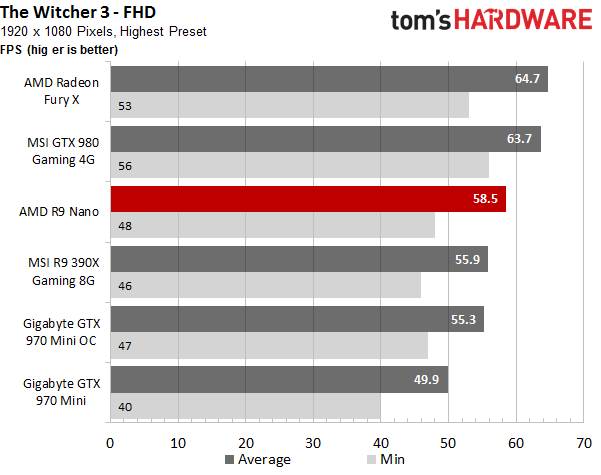

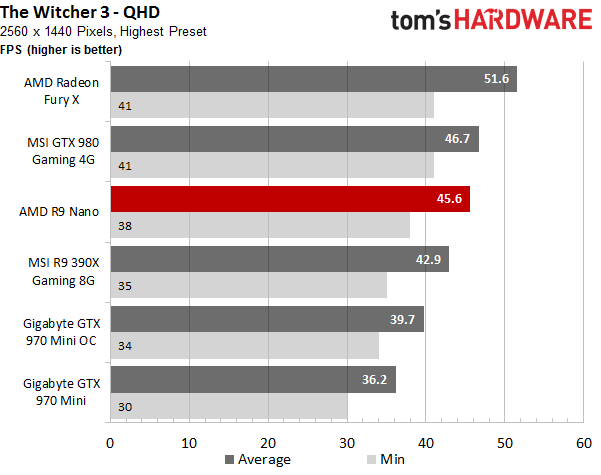
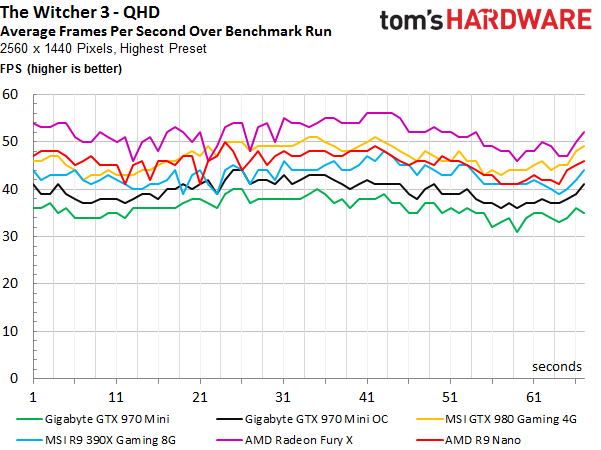
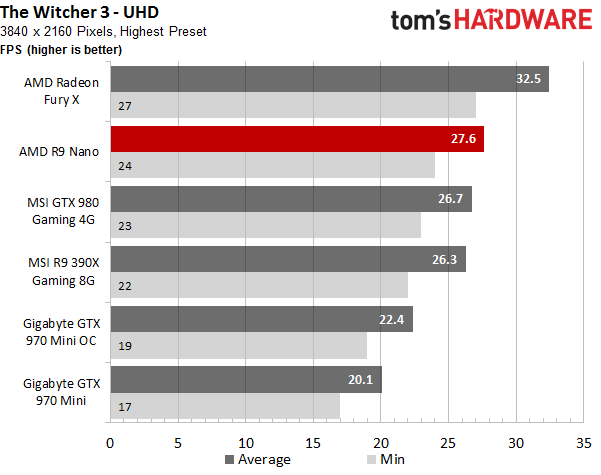
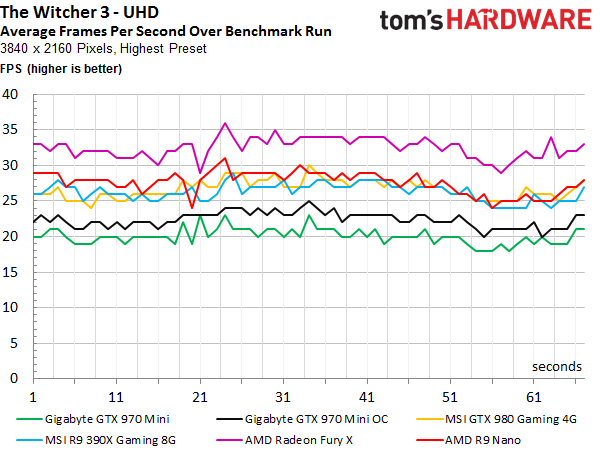
The Radeon R9 Nano’s main competitor (at least according to AMD), Nvidia's GeForce GTX 970 Mini (OC), lands well behind the R9 390X. Its frame rates are simply unplayable at 4K. This changes if you're willing to use lower settings or step down to QHD, where the card fares just well enough to provide a playable experience. Full HD doesn't present as much of a challenge; we don't observe any issues at that resolution.
Now lets take a look at the frame times, which are a lot more interesting than the FPS curve with its per-second averages. The GeForce GTX 970 Mini (OC)’s longer times between frames and substantial jumps, which can be perceived as frame drops, are easy to spot. Manually overlocking the card makes a big difference in consistency compared to its stock version.
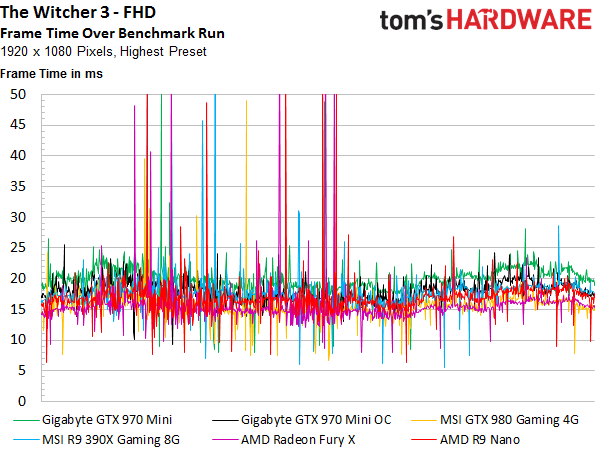
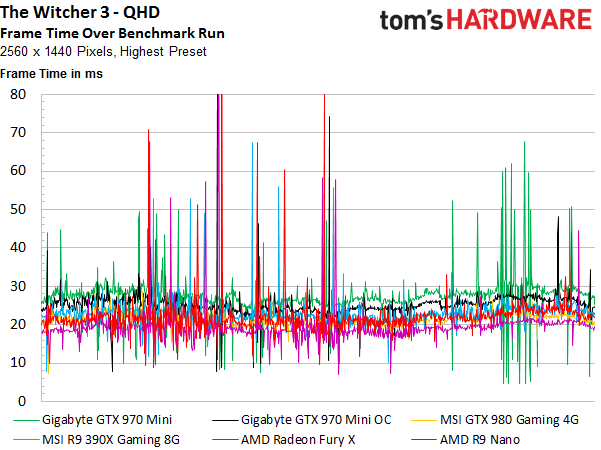
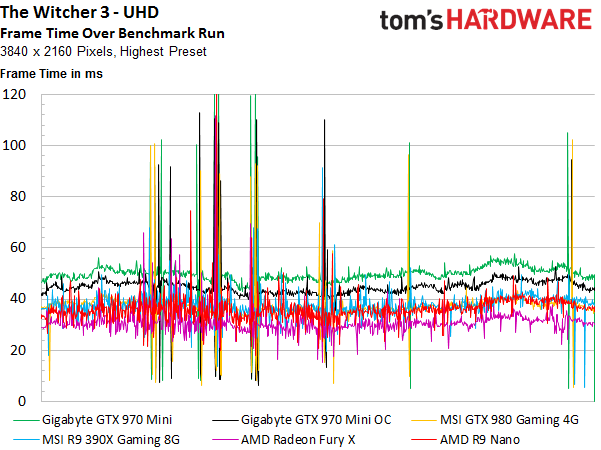
In the last graph, the frame render times were represented by the vertical position. After subtracting the averages from each card's frames, the curves end up on top of each other. This makes it easier to see the differences between them.
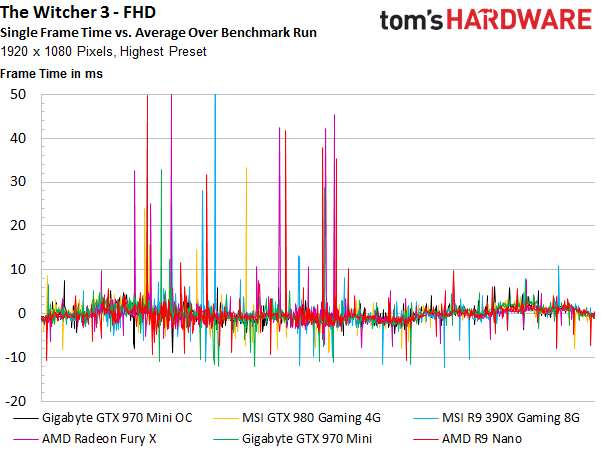
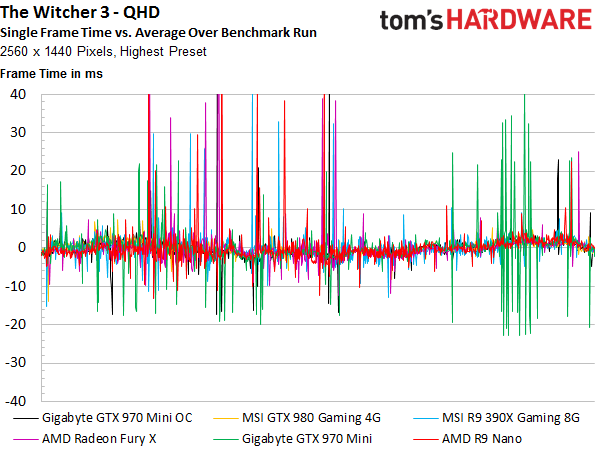
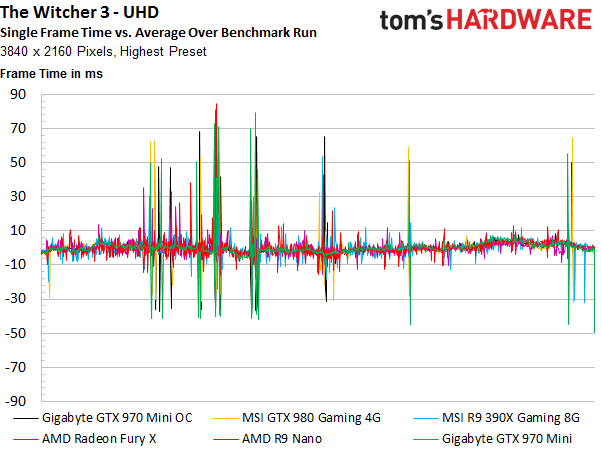
We’re now looking at smoothness by comparing the individual frames to each other and plotting the differences (that is, the time variance between individual frames). This makes it even easier to spot larger stutters and jumps.
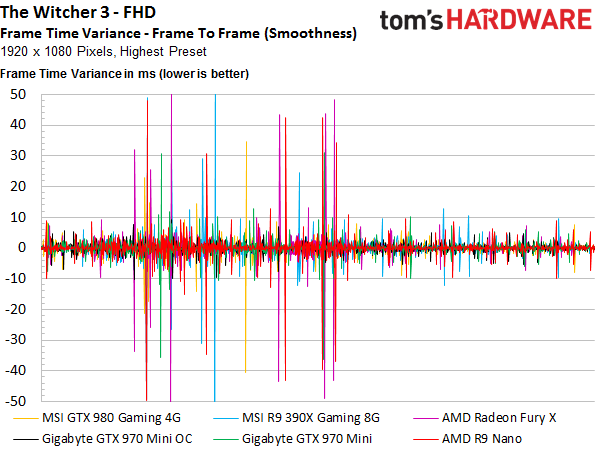
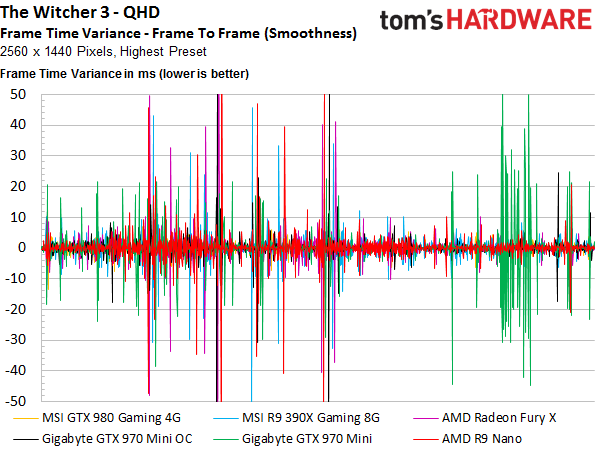
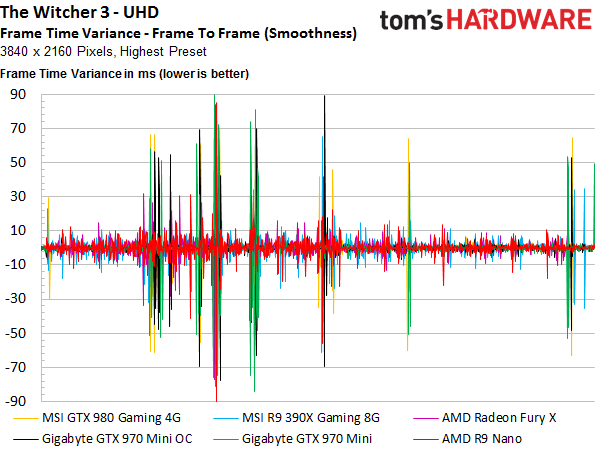
Grand Theft Auto V
GTA V is one of those games that tends to stutter, or even get stuck, when there’s too much happening at once in the open world. Although this can be difficult to identify when you're looking at average frame rates, let's start with those numbers for our three test resolutions.
There are no surprises to speak of. Nvidia’s GeForce GTX 980 can’t be beat until it hits 4K. Again, we see why AMD focuses so much on that resolution.
Get Tom's Hardware's best news and in-depth reviews, straight to your inbox.
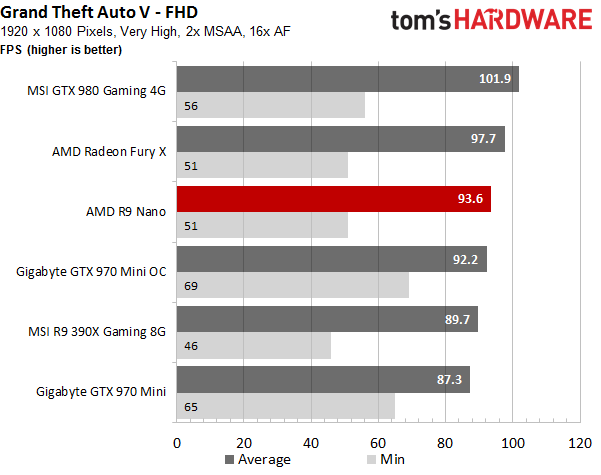
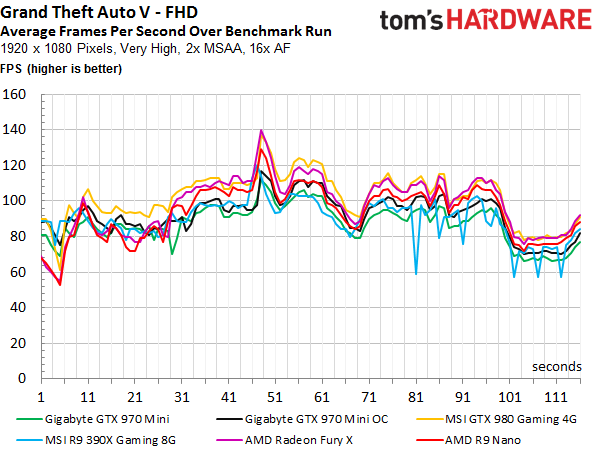
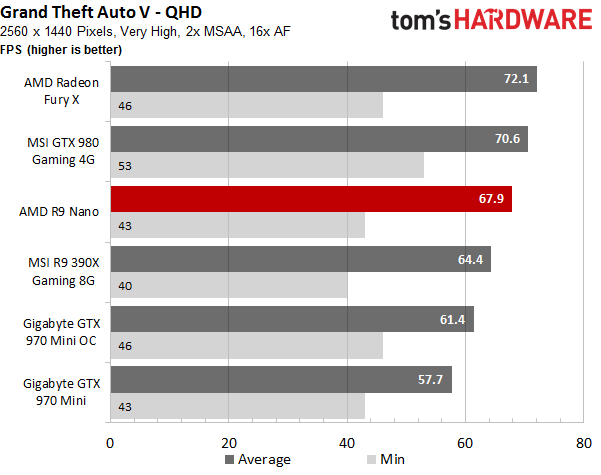
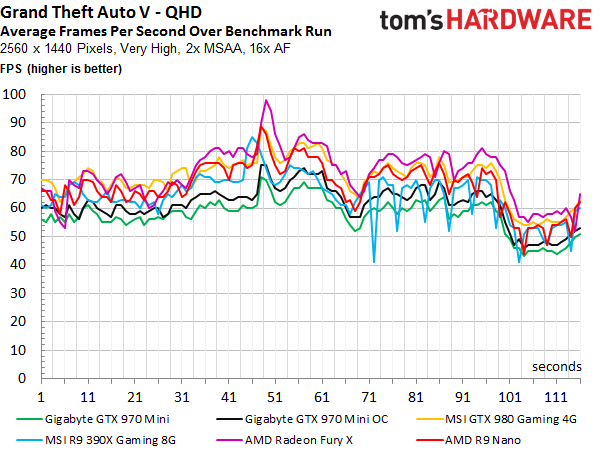
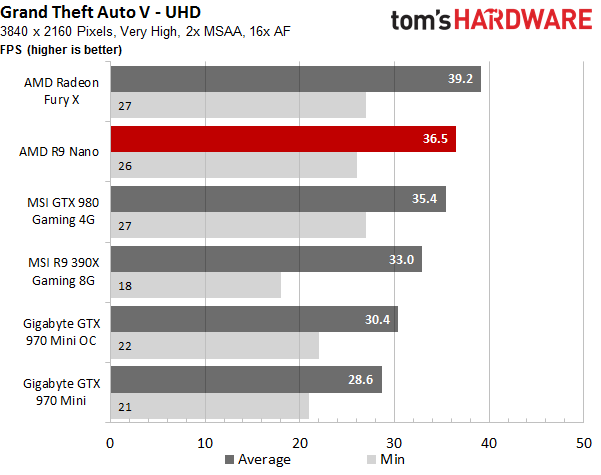
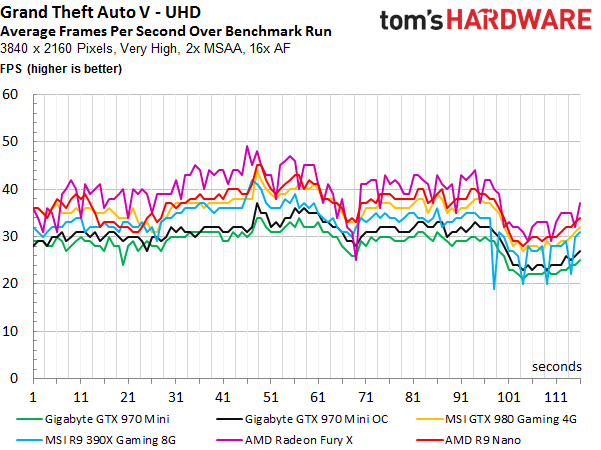
When it comes to frame times, the Radeon R9 390X doesn’t do very well. Just remember that the individual frame render times provide a general overview, and mostly show how much the graphics cards are stressed.
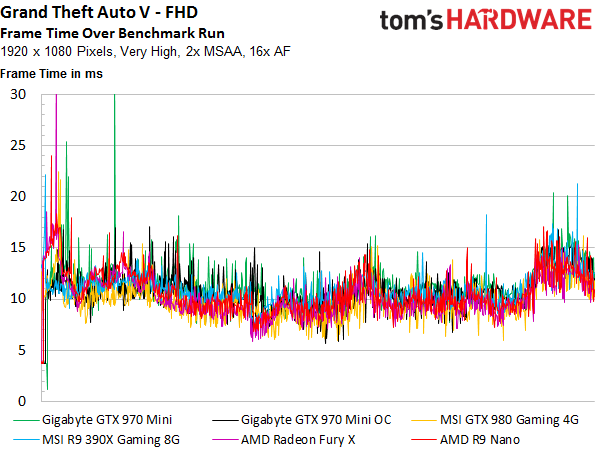
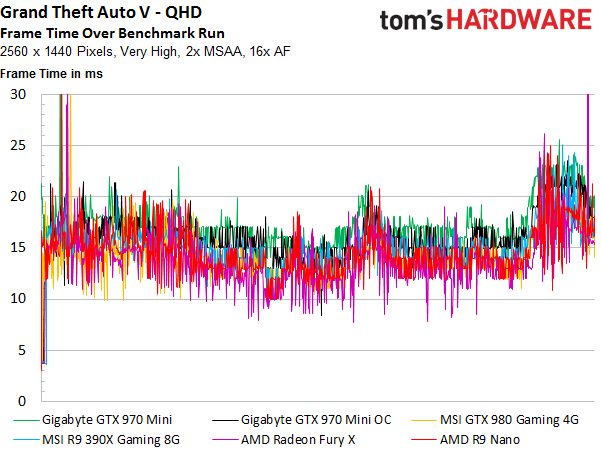
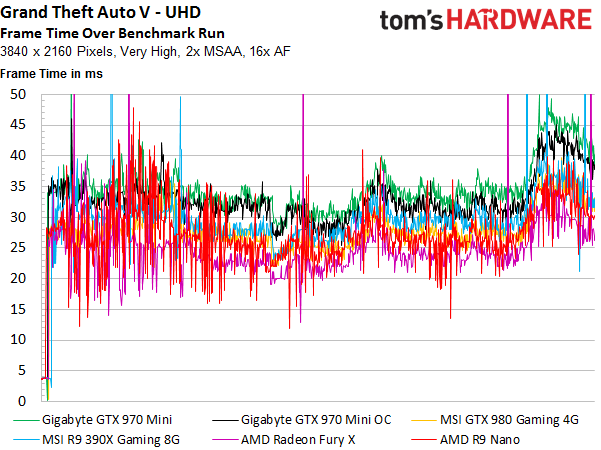
Taking a look at the GeForce GTX 970 Mini (OC)’s normalized curve at Ultra HD, it quickly becomes apparent that AMD’s graphics cards encounter much higher frame time variance. This isn’t a new finding, and it does mirror our subjective impressions that the game runs more smoothly on Nvidia hardware.
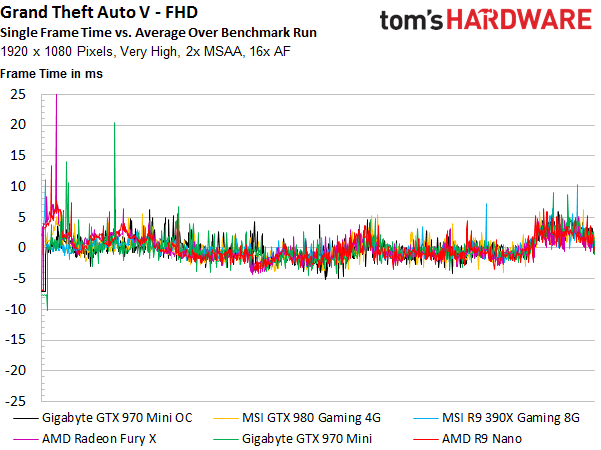
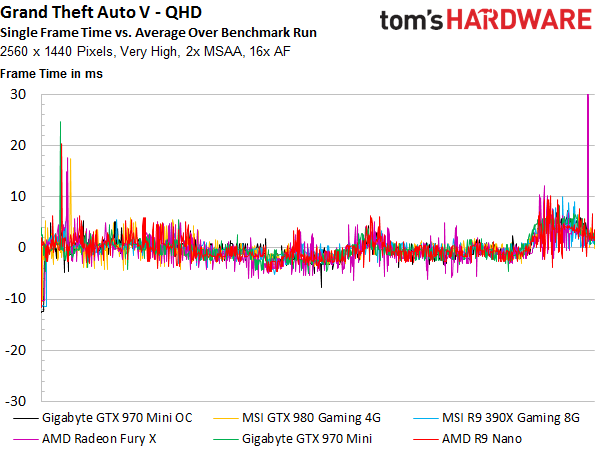
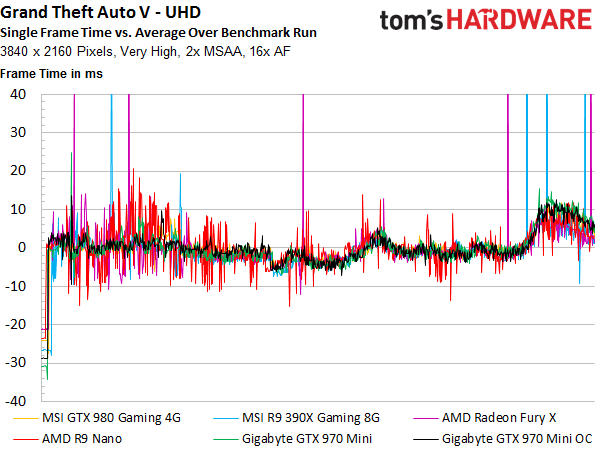
Jumping straight to the Ultra HD graph, we see that AMD's frame time variances are getting worse. We put the GeForce GTX 970 Mini (OC) front and center here again to show the difference.
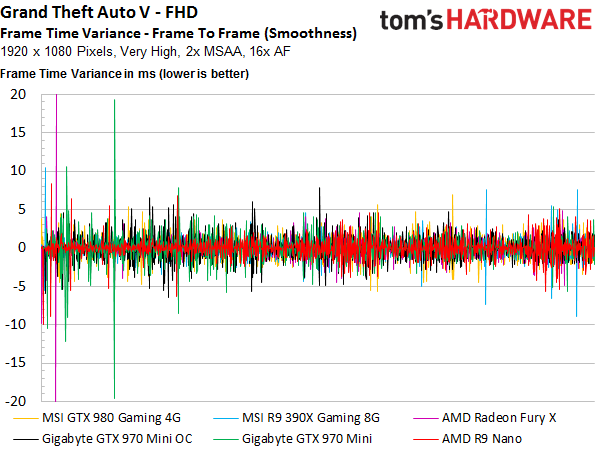
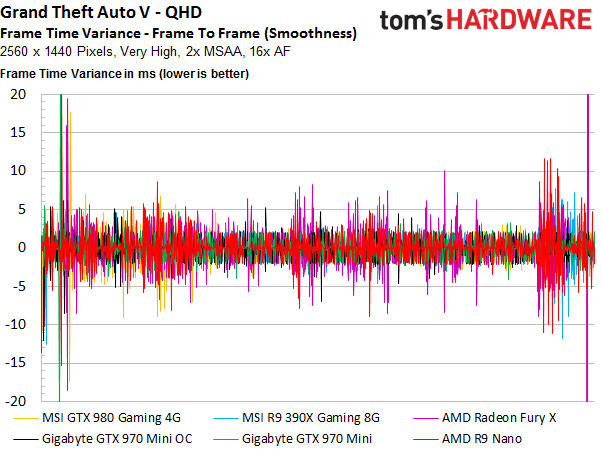
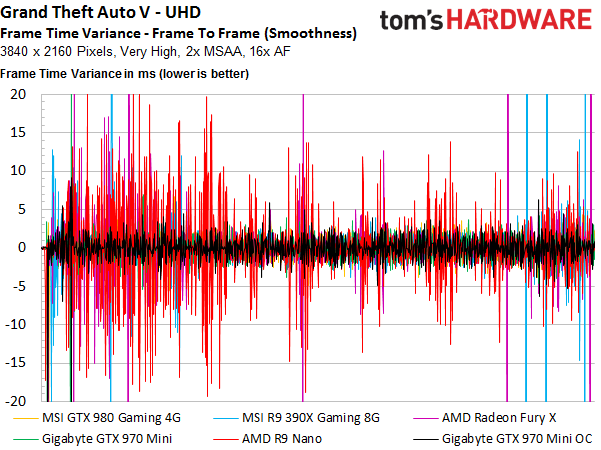
Nvidia's GeForce GTX 970 Mini (OC) might not be able to handle Ultra HD at maximum settings, but the experience is smoother and more balanced all the way up to QHD. Then again, GTA V is somewhat of a negative outlier. AMD’s driver team should really invest some time here.
Current page: Results: The Witcher 3 And GTA V
Prev Page How We Tested Next Page Results: Metro Last Light And Bioshock Infinite
Igor Wallossek wrote a wide variety of hardware articles for Tom's Hardware, with a strong focus on technical analysis and in-depth reviews. His contributions have spanned a broad spectrum of PC components, including GPUs, CPUs, workstations, and PC builds. His insightful articles provide readers with detailed knowledge to make informed decisions in the ever-evolving tech landscape
-
Eximo Looks like the table had a hiccup. GTX970 (OC) is showing a lot of the numbers from the R9-390X, and maybe a few numbers from the 980 column.Reply -
-Fran- It is a nice card and I agree, but... It's not USD $650 nice.Reply
This card is a very tough sell for AMD, specially since ITX cases that can house current long cards are not hard to find or weird enough to make short cards a thing.
It's nice to see it's up there with the GTX970 in terms of efficiency, since HTPCs need that to be viable and the card has no apparent shortcomings from what I could read here.
All in all, it needs to drop a bit in price. It's not "650 nice", but making it "~500 nice" sounds way better. Specially when the 970 mini is at 400.
Cheers! -
sna no HDMI2.0 in itx small system near the 4k TV is unforgivable AMD , what were you thinking?Reply -
sna Reply16605176 said:It is a nice card and I agree, but... It's not USD $650 nice.
This card is a very tough sell for AMD, specially since ITX cases that can house current long cards are not hard to find or weird enough to make short cards a thing.
It's nice to see it's up there with the GTX970 in terms of efficiency, since HTPCs need that to be viable and the card has no apparent shortcomings from what I could read here.
All in all, it needs to drop a bit in price. It's not "650 nice", but making it "~500 nice" sounds way better. Specially when the 970 mini is at 400.
Cheers!
well this card is for the smallest case ... not the easy to find huge long itx case.
I personaly find long itx cases useless ... they are very near to Matx case in size .. and people will pick up MATX ovet ITX any time if the size is the same.
BUT for 170mm long card ? this is a winner.
the only thing killing this product is the lack of HDMI2.0 which is very important for itx .. ITX are the console like PC near the tv.
-
heffeque Replyno HDMI2.0 in itx small system near the 4k TV is unforgivable AMD , what were you thinking?
I guess that they were thinking about DisplayPort? -
Nossy I'd go with the 950 GTX for a mini ITX build for a 1080pgaming/4k video HTPC.Reply
For a $650 bucks video card. I'd go with a 980TI and use a Raven RVZ01 if I want an ITX build with performance.